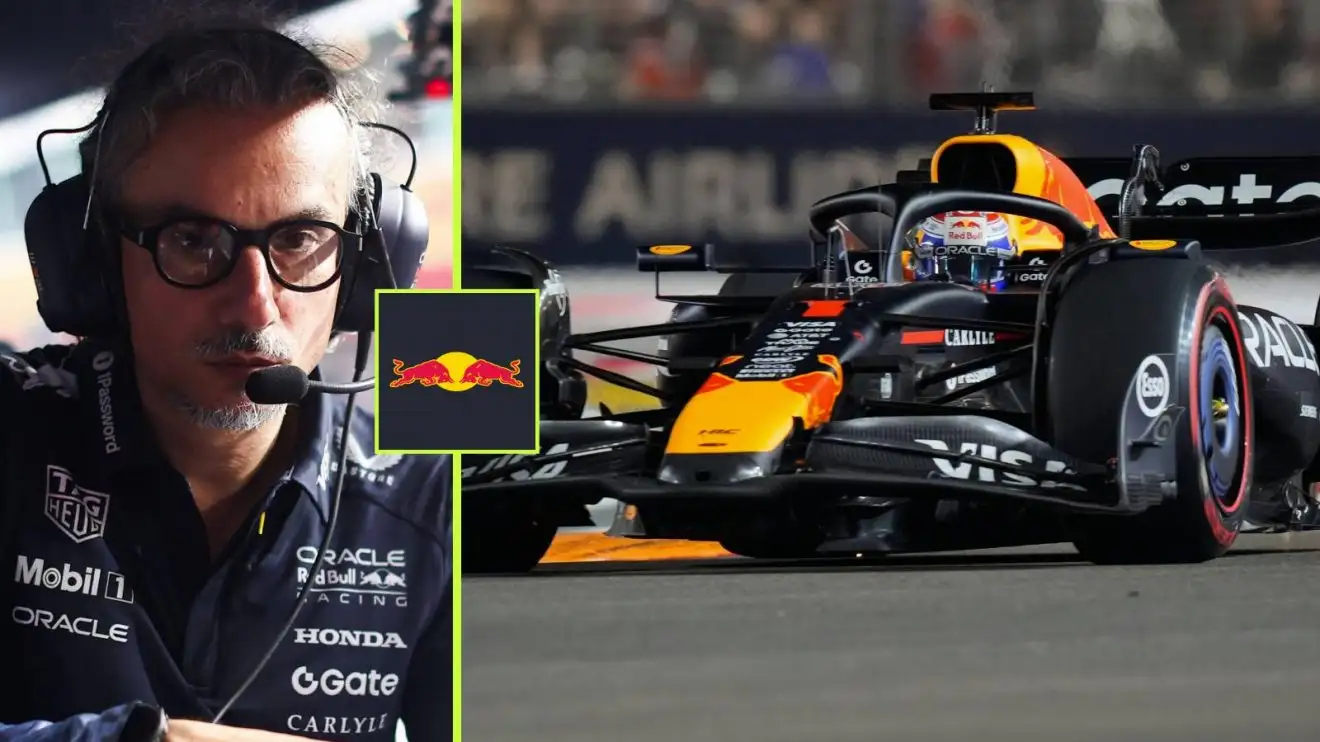Red Bull RB21 upgrades push ‘cost’ identified in F1 2026 confidence admission

Laurent Mekies has said there will be a 'cost' in F1 2026 to Red Bull's ongoing development this year, but there is opportunity in that cost.
Laurent Mekies has said Red Bull’s ongoing development of the RB21 will have a cost for F1 2026, but that cost should come as a net positive.
Red Bull is still rolling out updates to the RB21 as the F1 2025 season conclusion hoves into view, just a few weeks away.
Laurent Mekies: Red Bull must understand if RB21 has more performance
Red Bull, in recent races, has consistently shown up with updates for its RB21, the most of any of the front-running teams. This run of small tweaks and revisions has had some circuit-specific optimisation in mind, but there have been various changes aimed at extracting more performance from the car.
For example, at the Italian Grand Prix, Red Bull brought along a revised floor body with different surfaces, aimed at extracting more aerodynamic load through improved pressure distribution, while the floor fences and edges were revised in tandem.
In Baku, Red Bull had a revised rear corner to re-profile the inboard wing assembly, while in Singapore, the team brought along a revised front wing with locally increased cambers aimed at extracting more aero load.
Across the last five races, Red Bull has introduced 10 declared revisions to the RB21. In contrast, McLaren has introduced five, but four of these were self-declared as being circuit-specific for the low-downforce requirements of Monza.
The steady push from Red Bull has coincided with an improved run of results from Max Verstappen, in which he has scored two second-place finishes and two wins from the most recent four Grands Prix, seeing him close the championship deficit down to 63 points between himself and Oscar Piastri after said gap had ballooned to over 100 points.
Singapore marked the seventh-last weekend of the season, and the seventh-last race of the current regulation cycle. Updates, by and large, are few and far between at this point for most of the teams, as attention has shifted over to the revolutionary F1 2026 regulations, which promise low-hanging fruit for comparatively little effort at this early stage of a vastly different formula.
Red Bull’s push, therefore, is noteworthy for continuing to introduce improvements to a car with a very limited shelf life remaining, and team boss Laurent Mekies has admitted that there will likely be a cost, at this point, to the new RB22 in terms of outright initial performance.
But this isn’t necessarily a negative at this point, as Mekies explained the team’s understanding of newly developed parts matching the data from its own simulations will be imperative – correlation between these simulations and the wind tunnel with the real-world performance hasn’t always matched up for Red Bull over the last two seasons.
“From a Red Bull perspective, and without looking at the other guys around, I think it was, and is, very important that we get to understand if the project has more performance,” Mekies said in Singapore.
“It’s important that we get to the bottom of it, because we will elaborate next year’s project, even if the regulations are completely different, with the same tools, with the same methodology.
“It’s very important that we validate, with this year’s car, that our way of looking at the data is correct, our way of developing the car is correct, that produces that level of performance – that will give us confidence in the winter for next year’s car.”
Confirming that Red Bull is understanding what’s being produced and having the real-world performance match up with simulations does mean having to throw some resources at the RB21 at a point where most of the focus across the grid is firmly on next year, but Mekies said this opportunity cost is the right level of risk, in his eyes.
“So of course, it comes at a cost, undoubtedly, to the ’26 project,” he said.
“But we feel it’s the right trade-off for us, without judging what the other guys are doing.”
More analysis from PlanetF1.com:
👉 F1 uncovered: Hidden details revealed under the lights in Singapore
👉 Russell to stay? Predicting the next move for every out-of-contract F1 driver
The closing of the gap between the RB21 and the McLaren MCL39, a car that dominated most of the first half of the championship, has been noted by McLaren team boss Andrea Stella, who said his own team’s standing still on the development front for 2025 is playing a contributing role in the gap disappearing.
“I think it’s a combination of both,” he told the media in Singapore, when asked whether the performance in Singapore was down to a general trend or specific to Marina Bay’s characteristics.
“I think there’s a trend whereby we have stopped the development of the car now for quite some time, because we’ve been focusing entirely on 2026.
“There were, if anything, little parts that we took to Monza, but otherwise we were just focusing on ’26 for a long time, while we have seen that some competitors kept taking some new upgrades to the trackside.
“Red Bull certainly is one of those. They had a new front wing [in Singapore], a new floor in Monza, and we needed to wait a few races at low downforce, like Monza and Baku, and here, to identify that there’s also a pattern from a technical point of view.
“One is the pattern of braking with bumps and kerbs, and the other is with the low downforce, like we saw in Monza and Baku. So there are a few factors compounding.
“I think there’s certainly the fact that we haven’t developed the car for a long time, and some track characteristics.
“Our tracks still remain at the likes of Brazil, Qatar, and Abu Dhabi.
“Perhaps earlier on in the season, when we had a bit more advantage, we could cope better with some other circuits, but some competitors kept developing their car, or understood better how to use their car, so now the field has become even more competitive.”
Read Next: Ferrari chairman issues statement amid alarming share price fall





